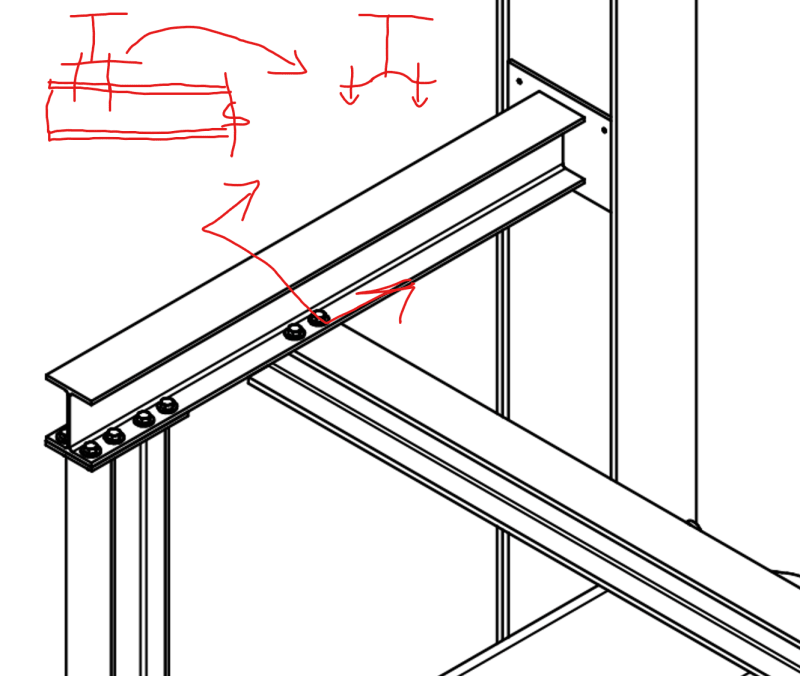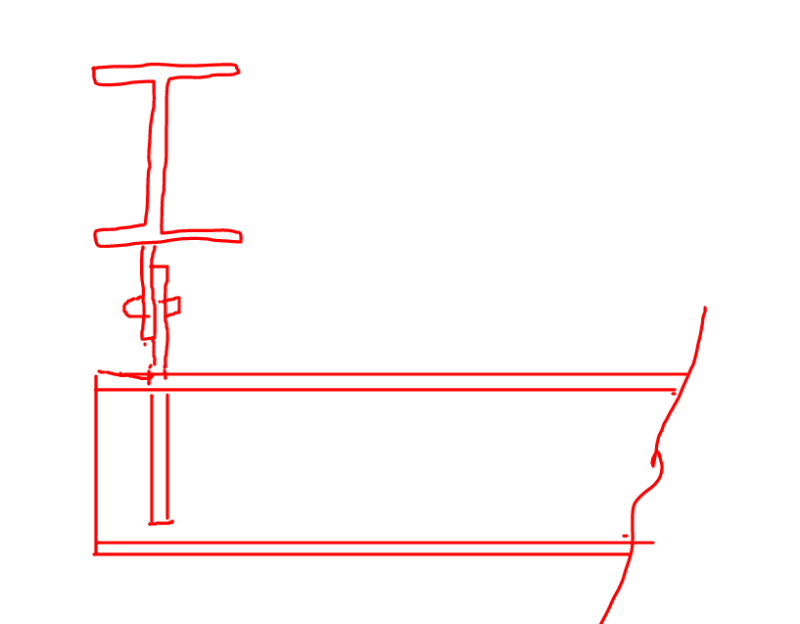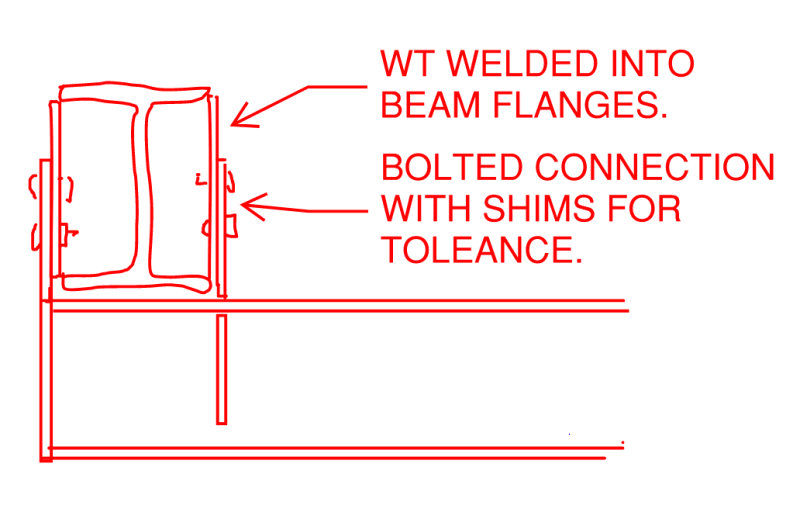JD P.E.
Mechanical
- Oct 17, 2021
- 79
Analyzing monorail for installation in an industrial facility. What is the best practice for checking plate pry on the 2 bolts shown on this connection (Picture attached). There are 4 bolts total, but just checking prying action on the outer 2.
Would you treat it like an angle connection with the weight pulling down at the flange edge of the top beam?
Would you treat it like an angle connection with the weight pulling down at the flange edge of the top beam?



